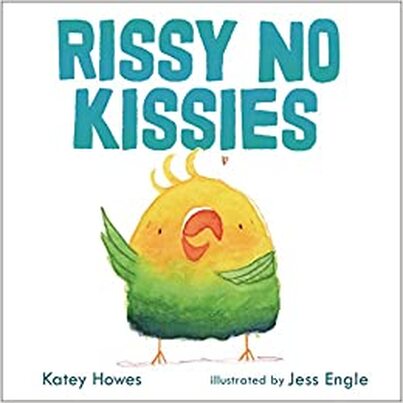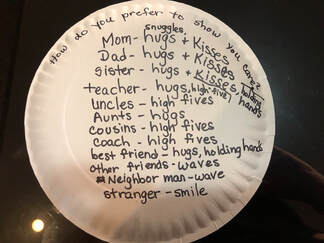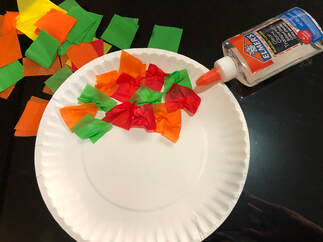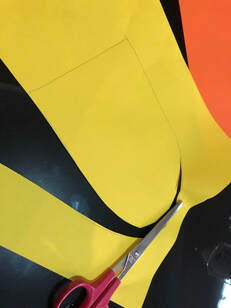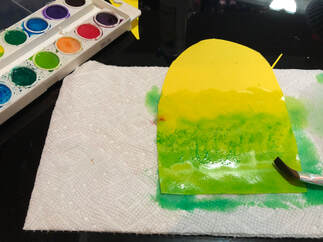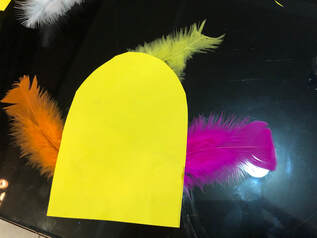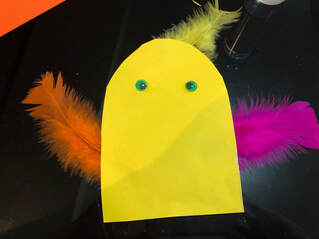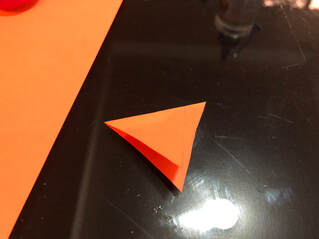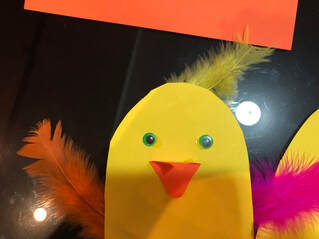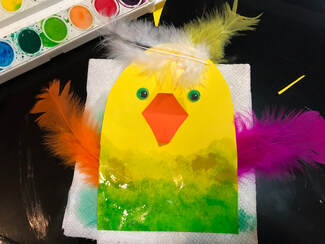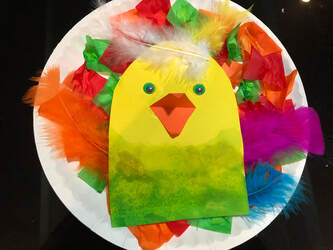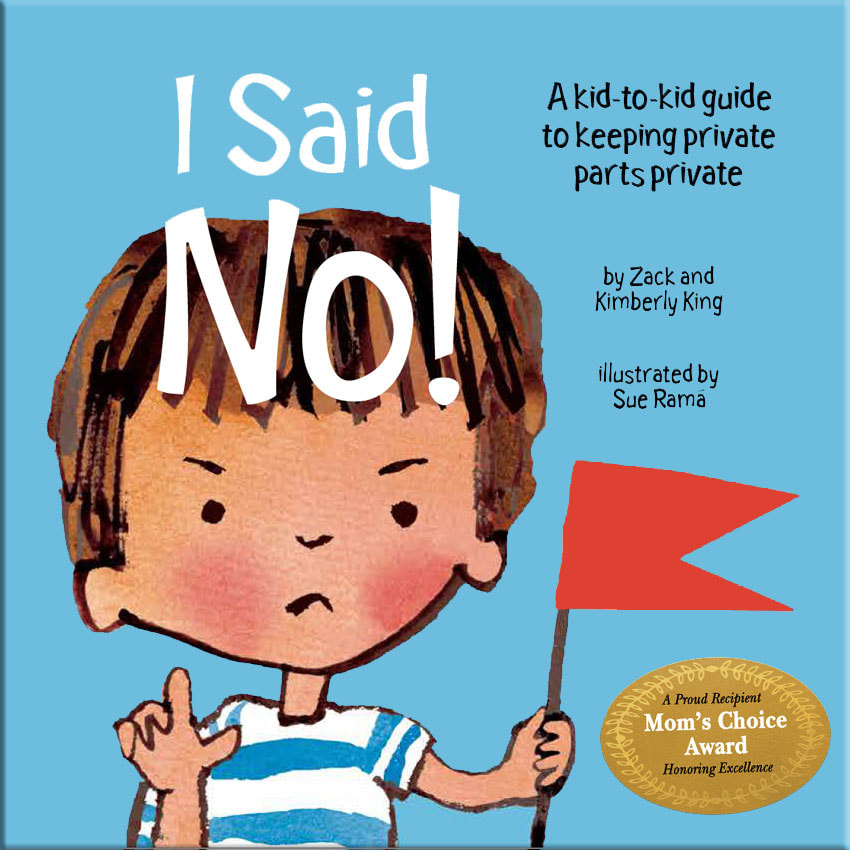A Book Review of Rissy No Kissies
Rissy No Kissies is an important book for many reasons. It addresses body autonomy, consent, boundaries, sexual abuse prevention and sensory issues. That is a lot of value to pack into a picture book. So, I am definitely a fan! The author, Katey Howes, did a great job presenting these concepts in an engaging way that young children can understand. The colorful watercolor illustrations by Jess Engle are adorable and help to lighten up this heavy subject. This book is as important for adult readers as it is for kids, as we are responsible for allowing kids to have autonomy over their bodies. Even if Uncle Joe doesn't like it, we need to give the message to our kids that they have the right to say "No" to unwanted physical touching of any kind. Kids need to have the power to make decisions about their bodies and practice this skill to build confidence for high school, college and later years when consent becomes an even bigger issue. The reason the topic of body autonomy and consent are so important to kids is seen in the statistics. According to the nation's largest anti-sexual violence organization (RAINN), in the United States: *1 in 9 girls and 1 in 53 boys under 18 years of age experience sexual abuse or assault at the hands of an adult. *Females ages 16 - 19 are four times more likely to be victims of rape, attempted rape or sexual assault. *Every 68 seconds an American is sexually assaulted. *Child sexual abuse perpetrators are: *59% acquaintances *34% family members *7% strangers The effects of sexual abuse and assault severely affect the victim's mental health, whether the victim is a child or an adult. Therefore, it is imperative that we do a better job at prevention. Learning concepts like these at a young age, will go a long way to prevention. it is crucial for adults to respect the preferences of kids when it comes to touch. Unfortunately, all adults are not going to do this, so this is when the caretaker needs to step in and validate the child's preferences. Saying "No" to an unwanted hug now can translate into having the confidence to say "No" later to an unwanted sexual encounter. It is especially important to practice these skills when there is a power deference. When someone has power over you, like an adult to a child, it is much more difficult to say "No." Kids have been taught repeatedly to listen to adults, respect their elders, etc. Unfortunately there are adults that take advantage of this power deference and this is a huge factor in the sexual abuse of children. This is also true for sexual assault in adults. The perpetrator often has power over the victim, whether it be due to age, role (parent, teacher, priest, boss, coach, etc.), physical size or social status. We need to practice saying "No" to those who have power over us when it comes to our bodies. The more practice kids get, the easier it will become later. It is the child's choice how to show love and caring to others and there are many options. Rissy is more comfortable with the options of giving feather fives, nuzzles, singing songs, holding wings, giving cards, hugs, handshakes, and waves. Also this is not universal. She may be comfortable hugging her parents, but not comfortable hugging Uncle Joe. She may prefer to give teachers and peers high fives, rather than snuggle with them. Comfort level depends on the relationship. Children have good instincts on who is not safe and as adults, we need to help children get to the point of trusting their own instincts. Another huge factor in learning about consent as a young child is learning the concept of obtaining permission before touching another person. Learning to respect another's body and not feeling entitled to do what you want to someone else without their permission is crucial. Whether it's a hug from Uncle Joe to a 5 year old, or a sexual encounter with a college classmate. If we learn from a young age that all of these things require permission, this will become the norm and sexual assaults will decrease. Asking a peer if they can give them a hug before doing it, and learning to respect their response, can translate to asking a peer later for a sexual encounter and respecting their "No." Additionally, sensory issues are very prevalent and to some people certain kinds of physical touch are uncomfortable. It is important that this is normalized and children or adults with sensory issues aren't made to feel "weird" for refusing certain kinds of touch. The message in this book is actually quite simple. Let's just respect one another and teach this from a young age. At the end of the book, the author has added a helpful note for kids and caregivers. If you're interested in more information about sexual abuse and assault, including a hot line number, you can learn more here. If you'd like to purchase this book and check out others by this author, click here. I have included an activity below to further explore the concepts in this book with kids. An Activity Idea for Rissy No Kissies The most important activity is to practice and model with kids the concept of asking others before touching them. Equally important is to have them practice using their voice to say if a certain touch is uncomfortable to them. Role playing is a helpful activity to practice these skills. Then, have fun with the following craft activity! Materials Needed: -white paper plate -black marker -tissue paper cut into squares and scrunched -glue -yellow construction paper or cardstock -orange construction paper -watercolor paints or crayons -paint brush and cup of water -craft feathers -googly eyes (optional)
2 Comments
A Book Review of I Said No! |
| I Said No! A kid-to-kid guide to keeping private parts private Written by Zack and Kimberly King Illustrated by Sue Ramá Publisher: Boulden Publishing Personal Safety is a critical topic to address with all children. It is one of the tools we have to help prevent trauma from sexual abuse and other dangers of childhood. Sexual abuse crosses all cultural, racial and economic boundaries. Child sexual abuse poses many threats to healthy functioning in adulthood and can lead to serious mental health and addiction issues. Therefore, it is crucial that we work toward prevention. |
The book, I Said No! focuses on sexual abuse prevention. It is a useful book to address this important topic for kids who have or have not experienced sexual abuse. It's appropriate for kids ages 3-9. I Said No! is an excellent resource for parents and kids as it thoroughly reviews topics pertinent to protecting yourself from sexual abuse and opens up topics for further discussion. It can help young victims feel they are not alone and stresses the importance of "telling." I Said No! is narrated by a child so it is a kid-friendly read. The authors are a son/mother team, Zach and Kimberly King, who were brave and generous enough to share their experience to help others.
This book in its entirety can be overwhelming, so it is best to read a section at a time. It is very important for parents to discuss the topics of this book with their kids after each section to open up communication. It is crucial to help your child feel comfortable discussing uncomfortable topics with you.
Private parts are described in the book as anything under your underwear. In my practice, I use bathing suits to describe which parts are private. Either is fine. Prior to this, however, I use unclothed, anatomically correct pictures of boys and girls bodies and have the child name all body parts, including the private ones. This gives me the opportunity to learn the family names for their private parts.
One thing I would add to this book is the importance of teaching the child the "doctor's names" or anatomically correct names for private parts. It is very important for children to have the language to communicate if someone does touch them inappropriately. Everyone does not know the meaning of a "coochie" or a "piddle widdle!"
After naming the body parts, we discuss what parts are private and the importance of keeping those parts private. I then have the child design and draw a bathing suit on the figures to make sure their private parts are private!!
The book goes on to explain the exceptions of when it's appropriate for a parent, caregiver, or doctor to touch their private parts and introduces the concept of green and red flags. This is a helpful way to discuss appropriate and inappropriate touch with children. I have used this analogy with children for years and it is very easy for them to understand. Children understand that green light mean "GO" and red light mean "STOP" at a very early age, so they pick this concept up easily. To clarify, a green flag means all is safe and comfortable. A red flag means STOP, there is danger. I presented an activity idea below to reinforce these concepts that is fun for kids.
I Said No! familiarizes children with common manipulations of "red flag" people including using treats, gifts, bribes, lies, and threats. This helps children understand when an adult may be trying to manipulate them so they can be more prepared.
Keeping secrets is another topic addressed, which is very important as most sexual abuse goes unreported. Children often don't tell anyone because they think it is their fault, or think that they may get in trouble. The perpetrator may have told them that this is "their secret." It's important to help them understand that telling makes it stop. They should keep telling until someone listens! The authors stress that there should be no secrets between you and your parents or adults you trust.
In my practice, I find that this "secret" concept can be confusing for kids so I help them differentiate between a surprise and a secret. I provide some examples of the differences and play a game so they can practice knowing the difference. For example, if they go shopping with Daddy and buy a present for Mommy, and Daddy says "Shhh! This is our secret, don't tell mommy." This is a "surprise." This is okay-A GREEN FLAG! If a babysitter watches a movie with them where people are naked and says "Shhh! This is our secret, don't tell your mommy." That is a "secret" and NOT okay-A RED FLAG!
The authors present many scenarios of potential abuse and review with the child how to handle each scenario. This is an exceptionally helpful part of the book. To add to this section, I do much role playing and rehearsing with kids. I teach assertiveness skills and practice with kids how to say "NO!" like they mean it. We practice making eye contact, saying "NO!" loudly and clearly, running away and telling a trusted adult.
I highly recommend this book for parents(or therapists)to empower children to STOP abuse in it's tracks. The authors provide many additional resources on sexual abuse and prevention. Check it out!
Check out the author's website at www.isaidno.info and subscribe to her newsletter for more information on sexual abuse prevention.
For therapists specifically, check out www.bouldenpublishing.com for other therapeutic books and activities on a wide range of topics.
This book in its entirety can be overwhelming, so it is best to read a section at a time. It is very important for parents to discuss the topics of this book with their kids after each section to open up communication. It is crucial to help your child feel comfortable discussing uncomfortable topics with you.
Private parts are described in the book as anything under your underwear. In my practice, I use bathing suits to describe which parts are private. Either is fine. Prior to this, however, I use unclothed, anatomically correct pictures of boys and girls bodies and have the child name all body parts, including the private ones. This gives me the opportunity to learn the family names for their private parts.
One thing I would add to this book is the importance of teaching the child the "doctor's names" or anatomically correct names for private parts. It is very important for children to have the language to communicate if someone does touch them inappropriately. Everyone does not know the meaning of a "coochie" or a "piddle widdle!"
After naming the body parts, we discuss what parts are private and the importance of keeping those parts private. I then have the child design and draw a bathing suit on the figures to make sure their private parts are private!!
The book goes on to explain the exceptions of when it's appropriate for a parent, caregiver, or doctor to touch their private parts and introduces the concept of green and red flags. This is a helpful way to discuss appropriate and inappropriate touch with children. I have used this analogy with children for years and it is very easy for them to understand. Children understand that green light mean "GO" and red light mean "STOP" at a very early age, so they pick this concept up easily. To clarify, a green flag means all is safe and comfortable. A red flag means STOP, there is danger. I presented an activity idea below to reinforce these concepts that is fun for kids.
I Said No! familiarizes children with common manipulations of "red flag" people including using treats, gifts, bribes, lies, and threats. This helps children understand when an adult may be trying to manipulate them so they can be more prepared.
Keeping secrets is another topic addressed, which is very important as most sexual abuse goes unreported. Children often don't tell anyone because they think it is their fault, or think that they may get in trouble. The perpetrator may have told them that this is "their secret." It's important to help them understand that telling makes it stop. They should keep telling until someone listens! The authors stress that there should be no secrets between you and your parents or adults you trust.
In my practice, I find that this "secret" concept can be confusing for kids so I help them differentiate between a surprise and a secret. I provide some examples of the differences and play a game so they can practice knowing the difference. For example, if they go shopping with Daddy and buy a present for Mommy, and Daddy says "Shhh! This is our secret, don't tell mommy." This is a "surprise." This is okay-A GREEN FLAG! If a babysitter watches a movie with them where people are naked and says "Shhh! This is our secret, don't tell your mommy." That is a "secret" and NOT okay-A RED FLAG!
The authors present many scenarios of potential abuse and review with the child how to handle each scenario. This is an exceptionally helpful part of the book. To add to this section, I do much role playing and rehearsing with kids. I teach assertiveness skills and practice with kids how to say "NO!" like they mean it. We practice making eye contact, saying "NO!" loudly and clearly, running away and telling a trusted adult.
I highly recommend this book for parents(or therapists)to empower children to STOP abuse in it's tracks. The authors provide many additional resources on sexual abuse and prevention. Check it out!
Check out the author's website at www.isaidno.info and subscribe to her newsletter for more information on sexual abuse prevention.
For therapists specifically, check out www.bouldenpublishing.com for other therapeutic books and activities on a wide range of topics.
Activity Idea for I Said No!
This activity is one I have done for years with clients and it has reinforced the above ideas well. This is a topic and an activity that can and should be repeated often as a frequent reminder of personal safety. It is best to do this activity during the part of this book that introduces red and green flag touch and presents scenarios.
| Directions: 1. Help child cut one red and one green rectangle out of paper for flag. 2. Fold end of paper flag over skewer or straw and tape down. Add extra tape just under flag so flag won't slide down. (You can also use glue for this. I use tape so we don't have to wait for them to dry and can get right to the game!) Flags are done! Now it's time for the game! 3. Read scenarios in book(pages 14-19) and make up some of your own with a mixture of red and green flag touches. Have child lift the appropriate flag for red/green flag touch and explain reason for each. For example: "A boy at school pulled you under the table and told you to pull down your pants." RED or GREEN flag? Why? "When you get home from school, your Dad runs up to you and grabs you for a great big hug?" RED OR GREEN flag? Why? 4. Switch roles and have child make up scenarios and adult lift up the appropriate flag and explain reason. 5. Repeat often to refresh child's memory. 6. Have Fun! |
Follow me on Twitter, Pinterest and LinkedIn
Categories
All
Absent Dad
Acceptance & Commitment -Therapy Skills
Acceptance Of Others
ADHD
Adoption
Anger Management
Anxiety
Body Autonomy
Cognitive Behavioral Therapy Skills
Consent
Coping With ADHD
Coping With Depression
Coping With Feelings
Depression
Disability Awareness
Disappointment
Divorce
Domestic Violence
Empathy
Fear
Feelings General
Feelings-General
Foster Care
Gender Identity
Giftedness
Grandparents As Guardians
Grief & Loss
Growth Mindset
Incarcerated Parent
Kindness
Kinship Care
Learning Disabilities
Making Friends
Mindfulness
Negative Self Talk
Parental Anger
Parental Arguing
Parent W/Mental Illness
Parent W/Substance Abuse
Racial Injustice
School Lockdown Drills
Seizures
Self Esteem
Sensory Issues
Separation Anxiety
Sexual Abuse
Sexual Abuse Prevention
Shyness
Standing Up For Others
Suicide
Supporting A Friend
Temper Tantrums
Terminal Illness
Trauma
White Privilege
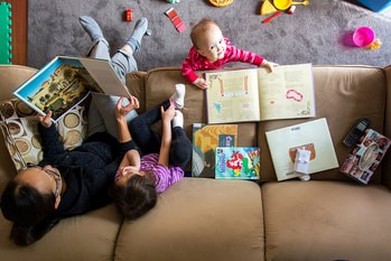
 RSS Feed
RSS Feed
